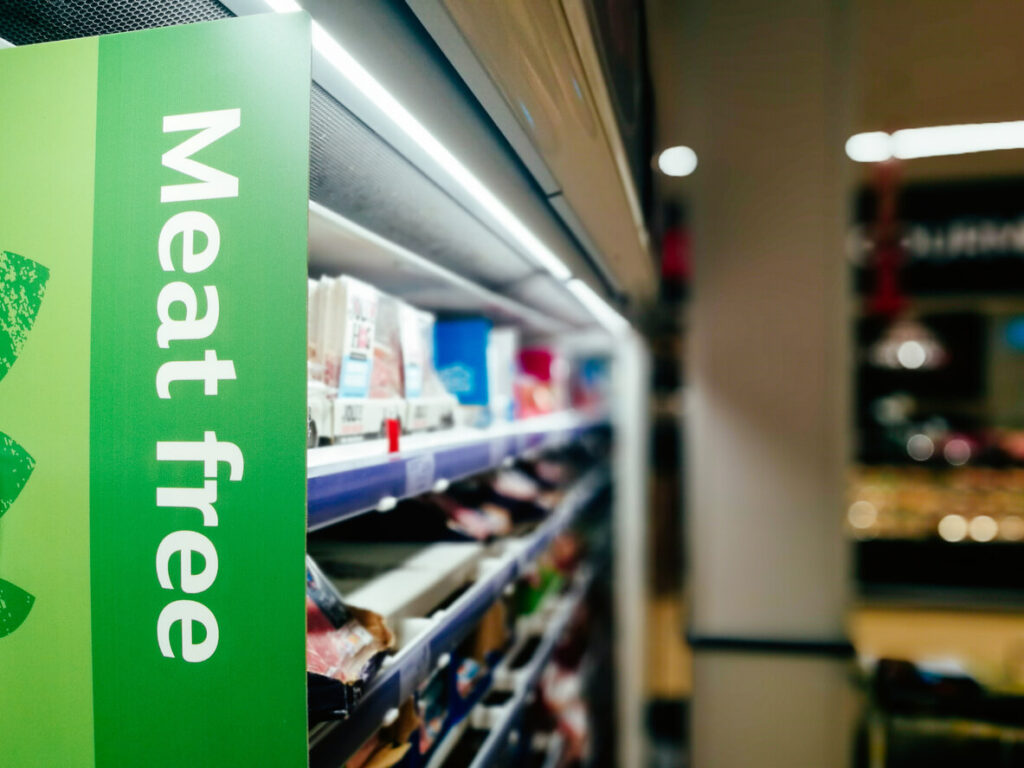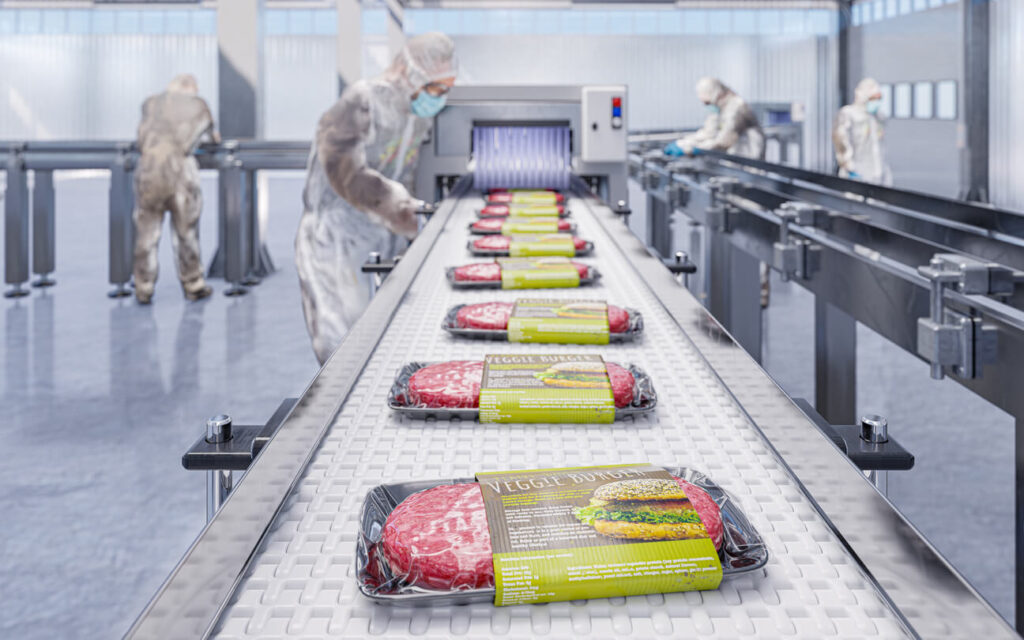The food industry is on the verge of a significant nutritional shift as the demand for vegan food rises. This article delves into the complex realm of vegan food production, analysing the challenges faced and the strategies used to preserve product integrity and avoid cross-contamination.
Cultivating a Greener Revolution in Vegan Food Manufacturing
Growing environmental concerns and health consciousness have led to an exponential increase in demand for vegan products in recent years. The way “plant-based” foods are marketed and perceived has changed dramatically. The increased demand for real plant-based products from consumers is mostly the result of the growing popularity of flexitarian, vegetarian, and vegan diets.
It’s important to define what exactly qualifies as a “vegan” product. In Europe, the phrases “vegan” and “plant-based” are frequently used interchangeably, with different organisations and regulatory agencies defining the terms according to particular standards. In order to avoid deceiving consumers, a definition for a “vegan standard” was established in 2017 in Brussels by major vegan organisations, which is correct products labelling in the European Community
Vegan Food Legislations

Because they have a long history of safe usage in the EU, the majority of plant-based components are covered by ordinary food legislation and don’t need additional pre-approval. New goods or components, however, may be subject to the Food Additives Regulation (EC No 1333/2008) or the Novel Food Regulation (2015/2083), requiring authorisation from the European Commission and an assessment of safety by the European Food Safety Authority (EFSA).
The Novel Food Regulation also applies to traditional plant-based foods from outside the EU, however the examination procedure is more expedited. Certain plant-based foods, particularly those with protected indications or those authorised as novel foods or food additives, must meet strict compositional requirements under the EU’s regulatory framework.
The Grey Area: Labelling and Legalities
Although ‘vegan’ labels and standards exist there isn’t a legal binding definition for this term within the EU and the UK. This means that choosing the right product positioning and denomination presents a challenge for owners of food businesses. Specifically, this applies to plant-based substitutes for dairy and meat-based goods. A large number of the regulations aim to prevent the misuse of protected indications and to safeguard terminology that has historically been used by the dairy and meat industries.
As per V-Label, companies protect themselves legally in the event that clients have allergic reactions by disclosing the possible existence of trace substances. However, the simple fact that this information is offered does not prove that the finished product contains animal products; rather, it only alerts consumers to the likelihood of a small amount of contamination occurring during production. In the EU, in the absence of an ingredients list, the term “contains” followed by the allergen’s name must appear in the allergen indication. Read more in EU guidance here.
Manufacturing Guidelines for Vegan Products

A major focus of production methods is to prevent cross-contamination with components originating from animals. To preserve the integrity of vegan production lines, particular manufacturing techniques and best practices must be put into place.
Manufacturers and customers rely on certification bodies to establish the legitimacy of products in the absence of uniform standards. But the standards for certification can vary greatly among different organisations. The internationally recognised symbol/certification for vegetarian and vegan products and services is V-Label. In the UK, it is the Vegan Society and the British Retail Consortium Global Standards (BRCGS).
International Requirements
In accordance with the V-Label’s requirements, any chance of animal ingredient contamination must be completely eliminated from the production process’ design. The overall contamination of the final product with all verified animal substances shall not be greater than 0.1% (1 g/kg).
Tests and Verification
Manufacturers can choose from a variety of testing alternatives to ensure that they are free of animal-derived ingredients. In the food business, tests for DNA-based detection, vertebrate identification, enzyme-linked immunoassays (ELISA), and lateral flow devices (LFDs) are frequently employed. Every test, however, has its limitations and calls for particular tools and financial considerations.
Establishing Vegan Food Manufacturing on Solid Prerequisite Programmes
It is necessary to have preparatory programmes in place before implementing in place a Hazard Analysis and Critical Control Points (HACCP) system. For these programmes to effectively prevent contamination from animal products, they should undergo internal auditing, risk assessment, and verification.
- Trusted Suppliers – manufacturing vegan food requires reliable suppliers. Cross-contamination concerns may be found with the aid of supplier audits and questionnaires.
- Threat Analysis and Critical Control Point (TACCP) – a major difficulty in the global marketplace is safeguarding customers against food fraud and maintaining authenticity. When there is a lack of traceability, consumers with vegan and allergen-restricted diets may receive false information.
- Cleaning Procedures – to successfully eliminate allergens, animal products, and substances originating from animals, validated cleaning processes are essential.
- Product Segregation – It is best if vegan items are produced in a separate facility. Cross-contamination can be avoided by using efficient product segregation methods if this is not practical.
- Product Scheduling – Factories without specialised vegan product lines can nevertheless employ considered product scheduling. Products that are vegan should take precedence over those that contain non-vegan ingredients.
The Challenge of Cross-Contamination in Vegan Food Production

The biggest challenge in the manufacture of vegan food is still cross-contamination. A thorough policy about allergens must be in place, particularly in establishments that produce only vegan food.
It is important to perform risk evaluations in order to verify that product packaging claiming veganism is feasible. If this isn’t done, there may be serious or substantial non-conformance as well as possible legal infractions.
Control Methods for Vegan Food Manufacturing
As a guarantee to customers that the product adheres to vegan ideals, certifications from respectable organisations act as a seal of legitimacy. Many manufacturers are choosing to work with societies such as the Vegetarian Society or Vegan Society but the need to confirm that all ingredients are vegan should be emphasised. This frequently entails carrying out extensive supplier checks and evaluations.
Training Plans
To close any gaps in current food safety procedures, training programmes should be updated on a regular basis. All employees who work in the production process should receive extensive training and understand the importance of adhering to vegan standards. This includes instruction on the possible sources of cross-contamination, knowledge of the subtleties involved in procuring vegan ingredients, and the significance of following stringent processing rules. Frequent training sessions can assist in maintaining staff awareness of current industry standards and laws as well as helping to reinforce these practices.
Innovative Technologies
The efficiency and accuracy of quality control in the manufacture of vegan food can be greatly improved by embracing cutting-edge technology like artificial intelligence (AI) and machine learning. AI may be used for accurate quality checks, which guarantee that the products continually satisfy vegan requirements, and predictive analysis, which can be used to anticipate possible problems in the manufacturing line and optimise procedures. Find out more in this article.
Environmental Controls
It’s also crucial to guarantee that the production area has the right environmental conditions. This entails keeping an eye on and managing variables including humidity, temperature, and cleanliness to stop any microbiological contamination that can jeopardise the items’ vegan purity.
Conclusion
It is clear that the vegan movement is more than a dietary trend; it represents a fundamental change in food production towards more moral, environmentally friendly, and health-conscious methods. Although producers are facing difficulties in preserving product authenticity and avoiding cross-contamination as demand for plant-based goods rises, going forward, collaboration between manufacturers, customers, and regulatory bodies will be crucial.
Manufacturers may guarantee the authenticity and calibre of their vegan products by implementing strict control procedures, carrying out comprehensive risk assessments, and placing a high priority on transparent labelling. Future food will take into account not only what we eat but also the production process. This is a significant step towards a world that is more ethical, sustainable, and health-conscious as well as more compassionate and ecologically friendly.











